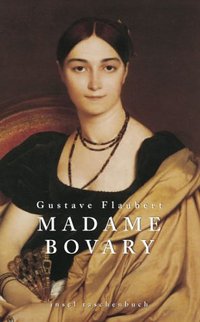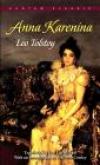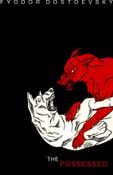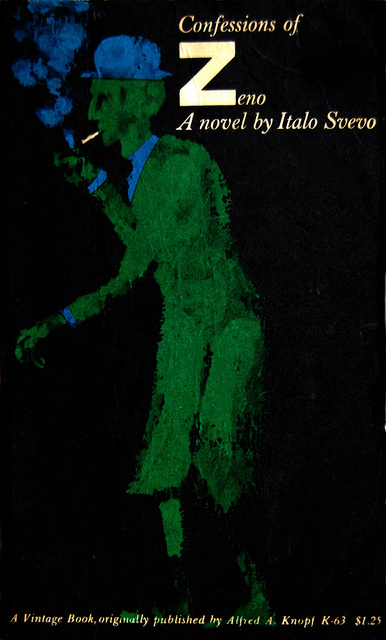Author Photo And Bio
 1. Pride and Prejudice by Jane Austen (1813). “It is a truth universally acknowledged, that a single man in possession of a good fortune must be in want of a wife,” reads this novel’s famous opening line. This matching of wife to single man—or good fortune—makes up the plot of perhaps the happiest, smartest romance ever written. Austen’s genius was to make Elizabeth Bennet a reluctant, sometimes crabby equal to her Mr. Darcy, making Pride and Prejudice as much a battle of wits as it is a love story.
1. Pride and Prejudice by Jane Austen (1813). “It is a truth universally acknowledged, that a single man in possession of a good fortune must be in want of a wife,” reads this novel’s famous opening line. This matching of wife to single man—or good fortune—makes up the plot of perhaps the happiest, smartest romance ever written. Austen’s genius was to make Elizabeth Bennet a reluctant, sometimes crabby equal to her Mr. Darcy, making Pride and Prejudice as much a battle of wits as it is a love story.
 2. In Search of Lost Time by Marcel Proust (1913–27). It’s about time. No, really. This seven-volume, three-thousand-page work is only superficially a mordant critique of French (mostly high) society in the belle époque. Both as author and as “Marcel,” the first-person narrator whose childhood memories are evoked by a crumbling madeleine cookie, Proust asks some of the same questions Einstein did about our notions of time and memory. As we follow the affairs, the badinage, and the betrayals of dozens of characters over the years, time is the highway and memory the driver.
2. In Search of Lost Time by Marcel Proust (1913–27). It’s about time. No, really. This seven-volume, three-thousand-page work is only superficially a mordant critique of French (mostly high) society in the belle époque. Both as author and as “Marcel,” the first-person narrator whose childhood memories are evoked by a crumbling madeleine cookie, Proust asks some of the same questions Einstein did about our notions of time and memory. As we follow the affairs, the badinage, and the betrayals of dozens of characters over the years, time is the highway and memory the driver.
 3. The Portrait of a Lady by Henry James (1881). James’s Portrait is of that superior creature Isabel Archer, an assured American girl who is determined to forge her destiny in the drawing rooms of Europe. To this end, she weds the older and more cultivated Gilbert Osmond, and eventually finds that she is less the author of her fate than she thought. Throughout, James gives us a combination of careful psychological refraction and truly diabolical plotting. The result is a book at once chilling and glorious.
3. The Portrait of a Lady by Henry James (1881). James’s Portrait is of that superior creature Isabel Archer, an assured American girl who is determined to forge her destiny in the drawing rooms of Europe. To this end, she weds the older and more cultivated Gilbert Osmond, and eventually finds that she is less the author of her fate than she thought. Throughout, James gives us a combination of careful psychological refraction and truly diabolical plotting. The result is a book at once chilling and glorious.
 4. Madame Bovary by Gustave Flaubert (1857). Of the many nineteenth-century novels about adulteresses, only Madame Bovary features a heroine frankly detested by her author. Flaubert battled for five years to complete his meticulous portrait of extramarital romance in the French provinces, and he complained endlessly in letters about his love-starved main character—so inferior, he felt, to himself. In the end, however, he came to peace with her, famously saying, “Madame Bovary: c’est moi.” A model of gorgeous style and perfect characterization, the novel is a testament to how yearning for a higher life both elevates and destroys us.
4. Madame Bovary by Gustave Flaubert (1857). Of the many nineteenth-century novels about adulteresses, only Madame Bovary features a heroine frankly detested by her author. Flaubert battled for five years to complete his meticulous portrait of extramarital romance in the French provinces, and he complained endlessly in letters about his love-starved main character—so inferior, he felt, to himself. In the end, however, he came to peace with her, famously saying, “Madame Bovary: c’est moi.” A model of gorgeous style and perfect characterization, the novel is a testament to how yearning for a higher life both elevates and destroys us.
 5. Anna Karenina by Leo Tolstoy (1877). Anna’s adulterous love affair with Count Vronsky—which follows an inevitable, devastating road from their dizzyingly erotic first encounter at a ball to Anna’s exile from society and her famous, fearful end—is a masterwork of tragic love. What makes the novel so deeply satisfying, though, is how Tolstoy balances the story of Anna’s passion with a second semiautobiographical story of Levin’s spirituality and domesticity. Levin commits his life to simple human values: his marriage to Kitty, his faith in God, and his farming. Tolstoy enchants us with Anna’s sin, then proceeds to educate us with Levin’s virtue.
5. Anna Karenina by Leo Tolstoy (1877). Anna’s adulterous love affair with Count Vronsky—which follows an inevitable, devastating road from their dizzyingly erotic first encounter at a ball to Anna’s exile from society and her famous, fearful end—is a masterwork of tragic love. What makes the novel so deeply satisfying, though, is how Tolstoy balances the story of Anna’s passion with a second semiautobiographical story of Levin’s spirituality and domesticity. Levin commits his life to simple human values: his marriage to Kitty, his faith in God, and his farming. Tolstoy enchants us with Anna’s sin, then proceeds to educate us with Levin’s virtue.
 6. The Possessed by Fyodor Dostoevsky (1872). Dostoevsky’s signature theme—the future of morality and the human soul in a Godless world—takes flight in this harrowing portrait of revolutionary terrorists who have surrendered their humanity to their ideals. The political satire throbs with urgency, but Dostoevsky raises this work to the level of art through rich characterizations of his combative principals: the well-meaning, ineffectual philosophical theorist Stepan Verkhovensky; his true-believing, monomaniacal son Peter; the conflicted, ” serf Shatov; and two vivid embodiments of good and evil—saintly Bishop Tikhon and urbane, satanic Nicolas Stavrogin.
6. The Possessed by Fyodor Dostoevsky (1872). Dostoevsky’s signature theme—the future of morality and the human soul in a Godless world—takes flight in this harrowing portrait of revolutionary terrorists who have surrendered their humanity to their ideals. The political satire throbs with urgency, but Dostoevsky raises this work to the level of art through rich characterizations of his combative principals: the well-meaning, ineffectual philosophical theorist Stepan Verkhovensky; his true-believing, monomaniacal son Peter; the conflicted, ” serf Shatov; and two vivid embodiments of good and evil—saintly Bishop Tikhon and urbane, satanic Nicolas Stavrogin.
 7. Confessions of Zeno by Italo Svevo (1923). Hypochondriac, philanderer, dilettante, neurotic, and raconteur, Zeno is a hyperconscious modern man. His subversive memoirs, ostensibly undertaken as a psychoanalytic “cure,” relate youth, courtship, marriage, affairs, and business misadventures with a disarming blend of frankness and humbug. A savagely funny work about addiction, and fiction’s juiciest raspberry at psychoanalysis, Confessions of Zeno embraces his sickness and vices as his irreducible humanity.
7. Confessions of Zeno by Italo Svevo (1923). Hypochondriac, philanderer, dilettante, neurotic, and raconteur, Zeno is a hyperconscious modern man. His subversive memoirs, ostensibly undertaken as a psychoanalytic “cure,” relate youth, courtship, marriage, affairs, and business misadventures with a disarming blend of frankness and humbug. A savagely funny work about addiction, and fiction’s juiciest raspberry at psychoanalysis, Confessions of Zeno embraces his sickness and vices as his irreducible humanity.
 8. A House for Mr. Biswas by V. S. Naipaul (1961). An Indian man living in Trinidad, Mr. Biswas is a tenant in some houses and an unfavored relative in others. All he wants is a home of his own. His adult son narrates this story of his monumental search for a home and all that implies. The quest becomes a metaphor for the displacements of postcolonial life in this novel that, while filled with poverty and loneliness, is also a teeming, comic epic of Hindu life in Naipaul’s native West Indies.
8. A House for Mr. Biswas by V. S. Naipaul (1961). An Indian man living in Trinidad, Mr. Biswas is a tenant in some houses and an unfavored relative in others. All he wants is a home of his own. His adult son narrates this story of his monumental search for a home and all that implies. The quest becomes a metaphor for the displacements of postcolonial life in this novel that, while filled with poverty and loneliness, is also a teeming, comic epic of Hindu life in Naipaul’s native West Indies.
 9. The Loser by Thomas Bernhard (1983). Our narrator had studied the piano with his friend Wertheimer and the virtuoso Glenn Gould. Gould’s unapproachable brilliance compelled them to give up music. While this abandonment leads to their ruin, Gould’s career does not bring him happiness. The Austrian writer probed these themes —of the joy, pain, and meaning of art —in this and his next two novels, which comprise his “arts trilogy,” Cutting Timber: An Irritation and Old Masters: A Comedy.
9. The Loser by Thomas Bernhard (1983). Our narrator had studied the piano with his friend Wertheimer and the virtuoso Glenn Gould. Gould’s unapproachable brilliance compelled them to give up music. While this abandonment leads to their ruin, Gould’s career does not bring him happiness. The Austrian writer probed these themes —of the joy, pain, and meaning of art —in this and his next two novels, which comprise his “arts trilogy,” Cutting Timber: An Irritation and Old Masters: A Comedy.
 10. Oscar and Lucinda by Peter Carey (1988). Carey explores some of his favorite themes —chance, risk, and dreams —in this Booker Prize–winning novel. Set in nineteenth-century England and Australia, it uses Dickensian details and set pieces to chronicle the lives of two protagonists who share a love of gambling: an English clergyman who has broken with his past and an Australian heiress with utopian dreams. This unconventional love story climaxes with a bold yet fragile scheme: to move a crystal church across the Australian outback.
10. Oscar and Lucinda by Peter Carey (1988). Carey explores some of his favorite themes —chance, risk, and dreams —in this Booker Prize–winning novel. Set in nineteenth-century England and Australia, it uses Dickensian details and set pieces to chronicle the lives of two protagonists who share a love of gambling: an English clergyman who has broken with his past and an Australian heiress with utopian dreams. This unconventional love story climaxes with a bold yet fragile scheme: to move a crystal church across the Australian outback.